#WebsiteRankingChecker
Explore tagged Tumblr posts
Text
How to find and use keywords that trigger AI Overview
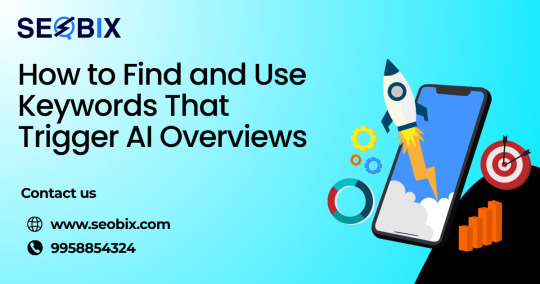
In today’s new reality of search, ranking on the top of page one of Google is just not good enough anymore. AI-generated summaries don’t simply choose the most popular answer. They’re not triggered by any exact keyword phrases but rather kind of broader keyword strings and content type.
What Determines When a Keyword Triggers an AI Introduction
In SEO, not all keywords are created equal. Many are just too broad or too general to make it to enough of a specific response to land a spot in Google’s new AI response box. The most common keywords that make AI Overviews trigger are generally the ones associated with questions that are informational, instructional or very niche and specific.
Google’s AI has learned to interpret these kinds of statements as invites for assistance and that’s when AI can jump in, providing a synthesized response.
Platforms like Seobix are at the forefront of providing real time intent analysis with keyword suggestions that go beyond the basics, helping creators navigate these more nuanced changes in user behaviour.
Getting to the Bottom of User Intent for AI-Friendly Queries
AI Overviews are made possible by Google’s mission to deliver the highest quality answer to a query ; rather than the most highly optimized web page. That’s because Google’s algorithm is filtering for pages most directly answering the intent of the query.
By analysing what users are actually searching for and zeroing in on how these searchers type or speak in natural language, you can discover the types of keyword phrases that will set you apart from the pack and directly or indirectly deliver what Google wants. Tools like Seobix, break down these patterns through the analysis of SERP features in real-time and AI answer trends, allowing you to focus your efforts on related keyword clusters of high-opportunity content that are more likely to evoke AI summaries.
Producing Material Worth the AI
Finding the right keyword is just part of the battle. To truly show up in the AI Overview, your material has to be laid out in a clear format that AI can digest and extract information from. That translates to descriptive, concise headlines, putting the most relevant answer early on in your content, and surrounding it with context that helps prove your expertise on the subject.
The balance of your content can then add layers of depth to that central explanation, offering examples, context, other tools.
Tracking AI Opportunities in Real Time
Google Search Console has just started rolling out new metrics to let users see impressions and clicks from AI Overviews but it’s very limited data so far.
This is where a tool like Seobix comes in and adds real value. By surfacing keyword opportunities, tracking AI visibility trends, and providing AI-optimized content recommendations, it makes it easy to keep your SEO strategy in-line with the way search is going to work
Conclusion
Google’s all-knowing AI doesn’t operate on keywords ; it operates on meaning. Therefore, as content creators, it is our responsibility to go beyond niche little catch phrases and start constructing based on theme-based relevance. The keywords that activate AI Overviews are much less about quantity and more about specificity, purpose, and value. By focusing on the best search intent-focused phrases and developing content that aligns with them, you improve your ability to rank and you improve your chances to be featured.
#WebsiteRankingChecker#SEO2025#SearchEngineOptimization#SEOTool#DigitalMarketingTools#WebsitePerformance#RankTracking#KeywordTracking
0 notes
Text
Why Human Voice Wins in Google Search Now

We’ve all noticed it. You Google something, and the answer shows up right at the top—before any blog, before any link. That’s Google’s AI Overview in action. And it's changing everything.
The AI doesn’t just scan for keywords anymore. It picks blogs that feel clear, helpful, and real. If your content feels robotic or over-optimized, it’s not going to show. The new Google wants content that sounds like it came from a real person. That’s why writing like a human matters more than ever.
It’s Not About Perfect Words
You don’t need to be a grammar genius or a technical writer. That doesn’t matter anymore. The secret now is connection. If someone reads your blog and it feels like a normal conversation, you’re doing it right.
What doesn’t work? Trying to sound smarter than needed. Adding long intros. Using fancy words to explain simple ideas. Google’s AI can actually detect when your writing is too “machine-like.” So instead, go for realness. Say what you mean. Keep it natural.
Start With The Point
In 2025, people don’t want to scroll to find answers. If your blog hides the solution under layers of intro, background, and fluff—Google notices that too.
So be quick. Tell people what they’re getting in the first few lines. Then use the rest of the blog to explain, give tips, or share personal takes. This keeps readers engaged and helps your blog show up in AI Snapshot results.
I changed this in one of my old blogs recently moved the main answer up top and simplified the rest. Within a week, it started appearing in Google’s AI box. Small change, big result.
Write Like You’re Talking to a Friend
Your blog should feel like a message. Not a script. Not an ad. Imagine your reader is right in front of you, and you’re just helping them out. That’s the energy you want.
Here’s the trick: read your blog out loud after writing. If it sounds weird or too “perfect,” rewrite it. Break longer lines. Use simple words. Add your real voice.
Blogs written this way feel warm, helpful, and trustworthy—exactly what Google’s AI looks for when it pulls answers for snapshot results.
Use Real Experience When You Can
Let’s say you’re writing about SEO trends. Instead of listing stats or quoting tools, talk about what you saw. What worked for you? What didn’t? That personal view adds depth and trust. It’s something a machine can’t fake.
Even small things like “When I used a more natural blog title, my clicks doubled” make a difference. It turns your content from generic into memorable. And Google can tell.
Also, when people stay longer on your blog or share it, that tells Google your content is worth showing. That feedback loop starts with honest, helpful writing.
Conclusion
Old blogs don’t need to be deleted. They need to be revived. Go back, read them again with fresh eyes. Do they feel useful today? Or do they sound like they were written for algorithms? Strip out the robotic stuff. Bring in your voice. Add questions that people are really searching for now. Sometimes just changing your headline or reworking your intro can get your blog back on Google’s radar. If you're doing SEO or content for a brand, this should be your routine in 2025. Update, rewrite, humanize.
Real FAQs That Could Appear in Google AI Overview
1. Why is human-style writing better for Google in 2025? Because Google’s AI now selects content that feels authentic, clear, and helpful to real people—not content that sounds robotic or keyword-heavy.
2. How do I make my blog fit AI Overview? Get to the point quickly, use natural language, and write like you're having a one-on-one conversation with the reader.
3. What tone should I use in my blog? A casual, helpful tone works best. Avoid being too formal or too structured. Keep it friendly and natural.
4. Should I delete old blogs that don’t rank anymore? No, just update them. Add fresh, real language. Make them easier to read and focus on helping the reader more clearly.
5. Do I still need keywords for SEO in 2025? Yes, but don’t overdo it. Use them naturally in your flow. Google cares more about how helpful your blog is than how many times you use a keyword.
0 notes
Text
The Death of Clicks? How AI Overviews Are Disrupting SEO

If your website is ranking in a great position and still losing traffic, then welcome to the new domain of AI Overviews. In 2025, Google's AI-powered summaries are now changing how users interact with search results. Users no longer want to click through the websites to get their information. Instead, they want instant answers on the SERP. AI Gives Answers, Not Traffic
Google Overviews extract snippets of content to deliver a well-pitched conversational response. The downside? These answers bring less traffic for the source sites. So even if your site is picked by the AI, it may never receive a single visit from any user. Ouch! Content is King, but Context is Queen
In order to survive this transition, companies need to rethink their content strategies. It is no longer about being #1 but rather the trusted source from which AI draws. Structured data, E-E-A-T (Experience, Expertise, Authoritativeness, Trustworthiness), and contextual depth are all important now.
SEO isn't dead: It has just been upgraded.
A certain set of marketers is in a panic, but the truth is that SEO is not dying; it is changing. Instead of opposing AI Overviews, it is time to cater to them. Create content that can be digested by AI as well as the search engine itself: simple, straightforward answers, a short value statement, and a structured format. The Smart Way Forward: Seobix
To stay ahead of changes, you need smarter tools, and Seobix is the name doing it. Real-time tracking, AI-powered content suggestions, and tracking of "click-less" experiments are just some of the ways Seobix can help you respond rapidly and retain visibility
#WebsiteRankingChecker#SEO2025#SearchEngineOptimization#SEOTool#DigitalMarketingTools#WebsitePerformance#RankTracking#KeywordTracking#google ai overview
0 notes
Text
Plan your SEO strategy in a much better way with Feature-rich Website rank checker.
Ranking in SERPs helps only to present your content to the target audience. But, to improve your SERP ranking instantly, you must have a track of your keyword performance. To simplify your keyword tracking process, I would suggest making use of a website ranking checker tool. This is because, with a top-notch website rank checker like Serpple, you can accurately and instantly track your SERP ranking position. Also, you can get custom SERP ranking reports, location-based keyword ranking data, and many more. So, get a clear view of keyword ranking positions with the help of our remarkable website rank checker.

0 notes
Text
Perfect website ranking checker tool
Are you searching for a perfect website ranking checker tool to check the keyword performance of your website?
Get accurate search results for any keyword within seconds by making use of a perfect SERP checker tool.
Serpple is a precise website rank checker tool that helps to monitor your location-specific and accurate keyword ranking data for any keyword.
Also, you can get customized ranking reports and frequent updates on keyword position changes with the help of our ideal website ranking checker.
Therefore, make use of Serpple and get google keyword ranking data for your targeted keywords.
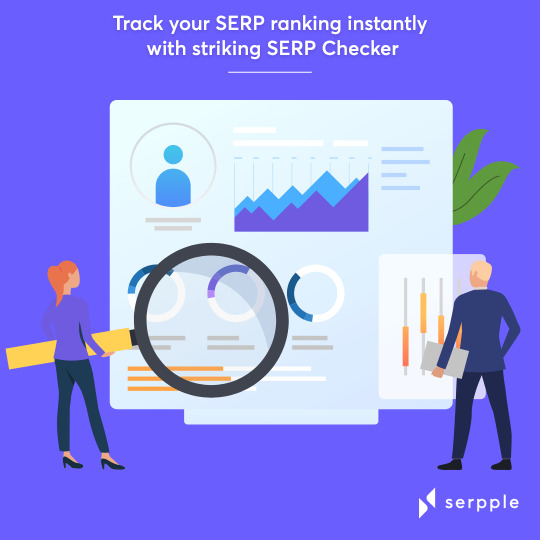
0 notes
Text
Website rank checking is just a click away!
To rank your keywords higher in SERP, knowing your keyword’s ranking is really important. So, all you need to look for is an exact website ranking checker tool to check your keyword’s ranking position. Thus, it’s high time you need a website ranking checker that will provide you with 100% accurate ranking data. SERPPLE is the one that’s exactly stuffed with all the necessary inclusions you require. We‘ve designed our website ranking checker to let you know the ranking positions of targeted keywords and help you stay ahead of your competitors.
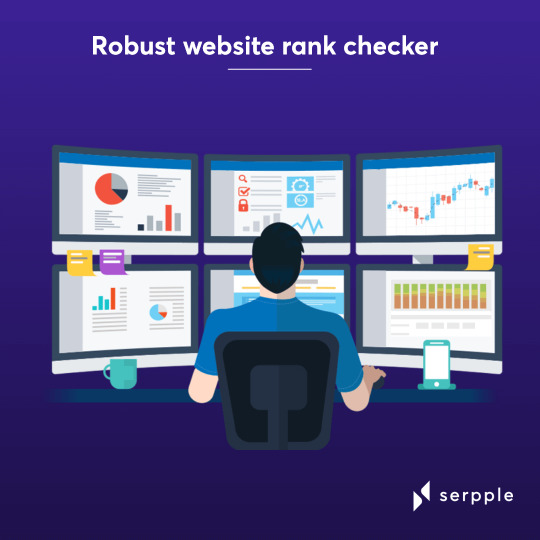
0 notes
Text
How Google’s E-E-A-T Affects Your Website’s SEO in 2025

A lot of people are confused about why their websites aren’t ranking even when they’ve done all the “SEO stuff.” If you feel the same, then you need to understand something big that Google is focusing on in 2025 — it’s called E-E-A-T.
After Google I/O 2025, it’s clear that Google is still putting a lot of weight on content that feels real and helpful. Even though there’s a lot of hype around tools like Gemini 2.5, AI Mode, and Agent Mode, what still matters the most is how real your content feels.
Let me explain everything in plain and simple words, like we’re just having a chat.
What Is E-E-A-T, Really?
E-E-A-T stands for Experience, Expertise, Authoritativeness, and Trustworthiness. These are the things Google now looks at to decide whether your content deserves to be on the first page or not.
If you’ve been writing blog posts that sound copied or don’t come from your personal knowledge or experience, then chances are, Google isn’t going to take them seriously.
So, if you’re writing about something like Gemini 2.5, but you’ve never tried it yourself — Google can figure that out. In 2025, just sounding smart doesn’t help. You need to actually know what you’re writing about.
Your Experience Matters the Most Now
In the past, you could get away with writing things based on what others have already said. But now, Google wants content that shows real experience.
So for example, if you’ve used AI Mode in Google Search and found it helpful for writing or doing keyword research, share that. Write exactly how you used it, what results you got, and if it helped you or not.
That kind of personal input makes your blog stronger — not just for SEO, but for readers too. People trust blogs that feel real, not robotic.
You Don’t Need to Be an Expert on Paper
Many people think Google only ranks content written by experts with fancy degrees. That’s not true. In 2025, what Google cares about is real knowledge.
If you run a blog about beauty, and you’ve tested products yourself, then your reviews are valid. If you’re into marketing and have tried Agent Mode to automate your tasks, write what happened. Whether it worked or didn’t — just be honest.
Google picks up on that kind of honesty and shows your content to more people.
Trust Is About Being Open
“Trust” might sound like a big word, but it’s actually simple. It means your content feels honest, helpful, and written by someone who cares.
You don’t need to over-explain or sound technical. Just write clearly. Talk about what you did, what worked, and what didn’t. That’s it.
Even something like reviewing Google Translate — if you used it, tell people how it helped, or what bugs you noticed. People appreciate honesty more than perfection.
What’s Up With AI Mode in 2025?
One of the biggest updates this year is the new AI Mode in Google Search. It changes the way search results show up — now people often get answers directly on the search page from AI.
So, what does that mean for bloggers like us?
It means you need to write content that AI wants to show. And AI only picks content that sounds real, is up to date, and helps people clearly. If your blog is written in your natural voice and shares real info, AI Mode might actually pull your content into the answer boxes.
But if your blog is just filled with rephrased lines and looks like it was written in five minutes, it’s going to be ignored.
Should You Use Gemini 2.5 for Content?
Google’s new tool, Gemini 2.5, is everywhere now. People use it to write emails, summaries, blog outlines, and more.
But here’s the truth: it’s only good as a support. If you let it write your entire blog, your content won’t feel real. Readers can tell, and Google can too.
You can use Gemini to get ideas or plan your structure. But once you’re writing, use your own words. That’s what makes a difference now. The more natural your content feels, the better it performs.
What Agent Mode Can Actually Do
At Google I/O 2025, Agent Mode got people really excited. It’s kind of like a smart assistant that can take actions for you — like booking, scheduling, organizing, etc.
If you’re a creator or marketer, you can use Agent Mode to plan content calendars or track trends. But remember, it’s just a helper. It won’t replace your thoughts, your voice, or your experiences.
It’s still you who needs to write in a way that feels real and personal.
Google I/O 2025 Was All About AI — But Content Still Needs Humans
This year, lots of people searched “When is Google I/O 2025” because they were excited to see what new things were coming. And yes, there were lots of updates related to AI.
But even with all that, Google repeated one important message: human content is still the most important.
So, don’t stress about writing the perfect blog. Just focus on being clear, honest, and real. If you tried something, say it. If you don’t know something, don’t fake it. That’s how you build trust with both readers and Google.
A Better Way to Write Blogs in 2025
If you want your blogs to do well this year, don’t follow outdated tricks. Just do these few things:
Use words that people are actually searching. Like: “Gemini 2.5,” “Agent Mode,” “AI Mode in Google Search,” or “Google I/O 2025.”
Keep your writing style natural. Like you’re talking to a friend.
Don’t stuff in keywords. Just place them where they make sense.
Don’t copy others. Use your own thoughts and opinions.
Update old posts with fresh info.
That’s it. It’s really not about being perfect — it’s about being useful.
Final Thoughts
At the end of the day, Google’s E-E-A-T in 2025 is just asking you to write like a real person. Help people. Share your experience. Don’t fake it.
You don’t need tools to make your blog sound smart. You just need your own words, your own stories, and a clear way to say it. If your content feels like you’re truly trying to help someone, then trust me — both people and search engines will value it.
Just stay real. That’s what works in 2025.
#WebsiteRankingChecker#SEO2025#SearchEngineOptimization#SEOTool#DigitalMarketingTools#WebsitePerformance#RankTracking#KeywordTracking
0 notes
Text
Fix Crawl Errors in Google Search Console Step‑by‑Step

If you’ve ever been frustrated by crawl errors in Google Search Console, you aren’t alone. These little issues can quietly wreck your SEO and drag down your rankings. I’ve had my fair share of nights checking for missing pages, 5xx errors, and DNS troubles. But today things are different. Let me take you through a simple, human‑friendly way to fix crawl errors, using the newest tools Google just rolled out after announcing big updates like Gemini 2.5, AI Mode in Google Search, and Agent Mode at Google I/O 2025.
Why crawl errors matter for SEO marketing
When Googlebot tries to read your site and hits a wall, it logs a crawl error. That might be a page not found, a server failing, or your DNS acting up. In SEO marketing every page counts, and if Google can’t crawl your pages, they can’t rank. Crawl errors are like hidden leaks in a ship—you don’t know they’re sinking you until it’s too late. Fixing them keeps your content visible and avoids sudden drops in traffic.
The new era after Google I/O 2025
You might be wondering, when is Google I/O 2025 happening? It took place on May 20 and 21, and Google used that stage to drop some big announcements. The star of the show for Search Console was AI Mode in Google Search, powered by Gemini 2.5 under the hood, and an enhanced Agent Mode to help us webmasters fix issues faster. These updates have transformed a manual, frustrating process into something more intelligent and efficient.
How to see crawl errors in Search Console
First thing’s first: open Google Search Console and click on Coverage followed by the Errors tab. Instead of a raw list of URLs, you’ll now see AI‑powered suggestions if you’ve enabled AI Mode. These suggestions might flag groups of 404 errors, server issues, or DNS blips. Even if the list is long, the AI groups related errors together, saving you time and giving you a clear view of what needs fixing.
Understanding each error type
Each category of crawl errors requires a different approach, so it helps to understand why they happen. DNS errors usually mean your domain couldn’t be resolved, often tied to hosting or DNS provider problems. Server errors, the dreaded 5xx family, point to issues on your web server—maybe it crashed or your scripts got overwhelmed. The classic 404 means the page is missing, often from deleted content or wrong internal links. Soft 404s are sneaky; they return a 200 status but have little or no real content, causing Google to treat them as “page missing.” Recognizing these differences helps you tackle them correctly.
Fixing DNS and server errors step by step
When you spot a DNS error, log into your DNS provider or hosting dashboard. See if your A, CNAME, or NS records are intact. If you recently switched providers or used Cloudflare, check for any misconfigurations. You might even temporarily pause Cloudflare’s proxy to make sure it’s not blocking Googlebot. Once the records fix, go back to Search Console and hit Validate Fix. It tells Google to recrawl those URLs.
Server errors can be trickier. Log into your server or hosting control panel and check for error logs around the time Googlebot hit your site. It might be overloaded PHP scripts or a misbehaving plugin. Maybe a sudden spike in traffic caused timeouts. With AI Mode and Agent Mode, Search Console sometimes gives hints like “slow response time” or “resource limit reached.” If you’re using managed hosting, reach out to support. Once you’ve fixed the backend, go back and ask Google to validate.
Repairing 404 and soft 404 pages
When Google bumps into a 404, think about why that page is missing. If the content is gone for good, send a hard 410 Gone status—it tells Google you meant to remove that page. If you’ve moved the content somewhere else, a 301 redirect to the new URL is the right move. Soft 404s are a little trickier. They happen when pages return 200 but have no substance—maybe a thin “this page doesn’t exist” message. Beef up those pages, add real content, or turn them into redirects. After updating, hit Validate Fix again in Search Console.
The lasting benefit to SEO marketing
Every crawl error you fix is a step toward better SEO marketing performance. Google sees a healthy, well‑structured site as easier to trust. Combine that with optimized content, mobile speed, and user‑friendly layouts, and you’ve built a strong foundation that gets rewarded in rankings. The enhancements from Google I/O 2025 — Gemini 2.5, AI Mode, and Agent Mode — just speed up the process. You’re not chasing errors, you’re preventing problems before they happen.
Putting it into practice
Let me walk you through a typical week. On Monday, I log into Search Console and check the Coverage Errors tab. The new interface shows AI Mode suggestions up front. If I see a few new 5xx or DNS errors, I log into my hosting dashboard, look at logs, make tweaks, and hit Validate Fix. Mid‑week, I review soft 404s or broken links, fix any thin pages or add 301s, and re‑validate. On Friday I glance at performance metrics—any dips? Did click impressions bounce back? If yes, job done. If not, I dig deeper. You can do the same, and now you’ve got Google’s own AI tools to help.
Using Google Translate for multilingual sites
If your site targets different languages, this step is crucial. After enabling AI Mode and Agent Mode, use Google Translate to scan your international content. Gemini 2.5 helps report crawl errors by language path, and you can fix errors in each version separately. No guessing. If your French pages are missing metadata or serve soft 404s, you’ll know exactly which URLs need attention.
Final thoughts
Crawl errors are like mosquitoes—tiny but irritating, and if you ignore too many, they can ruin your day. When Google I/O 2025 introduced AI Mode, Gemini 2.5, and Agent Mode, they gave us more powerful tools to wipe those bugs out fast. I’ve distilled everything here into a real, step‑by‑step approach you can follow now. Start with the Coverage tab, let AI group errors, dive into server, DNS, or content issues, fix them, validate, and repeat. Keep monitoring performance and stay on top of any new crawl issues.
#WebsiteRankingChecker#SEO2025#SearchEngineOptimization#SEOTool#DigitalMarketingTools#WebsitePerformance#RankTracking#KeywordTracking
0 notes
Text
Understanding Rank Fluctuations in the New SERP Era

AI-made summaries are now the main type of feature in SERPs. Quicker answers can come from various websites without users needing to do further searching. Your page may nevertheless be cited or included in works, even if people don’t visit it.
SEO tools like Seobix help you see how much this kind of visibility your site gets. It goes beyond checking rankings and catches your post’s entry into AI summaries, voice replies, and rich results, the most active areas of natural search outputs.
Volatility does not always lead to failure
That doesn’t necessarily mean that you’re downgrading in some way. Occasionally, these shifts simply represent different styles, not signs of the movies getting worse. A blog post can lose one position in the search results, yet it may get more visibility thanks to being showcased in a featured snippet or video carousel.
You can check how your ranking shows up in various SERP layouts and on different devices using Seobix, not only where your ranking starts. This helps you see how you are doing in the constantly evolving world of online searches.
Being flexible is better than being inflexible.
Google will award websites that grow with what the users desire in 2025. Pages that provide outdated information are promptly moved lower in the results. For your content to stay in the top spots, it should always be relevant, engaging, and focus on the needs of users. Learning from what people are typing in the search bar helps you update your website promptly.
Seobix guides you to adjust content using real keywords and new topics before your ranking on search engines drops.
Just because of an algorithm , not defined.
The algorithm updates made by Google are now more common, harder to spot, and based on lots of data. Sometimes, changing ranks in a battle is only a way to add realism to the test. Fast, extremely big changes can actually cause more harm than solutions.
Instead, rely on Seobix to explain the reasons for these changes. Understanding if the decline is widespread or just with some keywords will allow you to think clearly and decide what to do.
Conclusion
Rankings may change but the objective we want to achieve is being seen. If you prioritise helpful writing, accept the variety on search results, and rely on Seobix to tell you about upcoming changes, your SEO efforts will succeed regardless of what happens to the algorithms.
Nowadays, ranking well requires smarter tracking, and Seobix is designed to make sure you are never left behind.
#WebsiteRankingChecker#SEO2025#SearchEngineOptimization#SEOTool#DigitalMarketingTools#WebsitePerformance
0 notes
Text
Website ranking checker - Serpple
Website ranking checker – Serpple
SERPPLE, our website rank checker is an exact Google rank checking tool. It eases your work by aiding you with finding the positions of your targeted keywords in SERP. It also provides you keyword ranking data with 100% accuracy. Thus, undeniably, you need a website ranking checker that will provide you with 100% accurate ranking data. SERPPLE is the tool that has been stuffed with all…
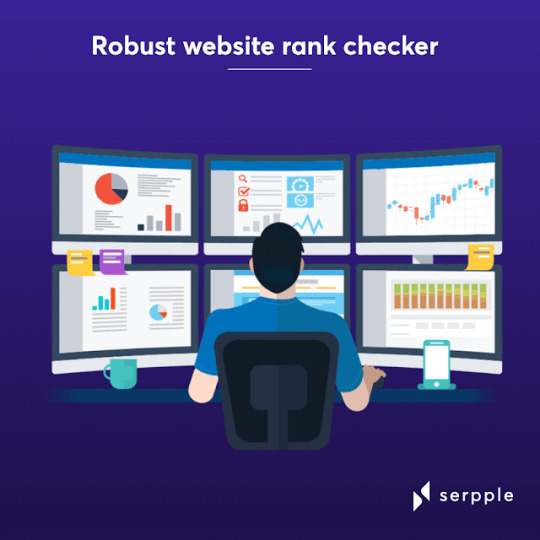
View On WordPress
0 notes
Text
Serpple website rank checker provides accurate ranking data
The wise way to know your keyword’s rankings is to look for an exact website rank checker tool.
Such a tool will allow you to check your keyword’s ranking position.
Thus, undeniably, you need a website ranking checker that will provide you with 100% accurate ranking data.
SERPPLE is the tool that has been stuffed with all the necessary inclusions you require to plan your SEO strategy very well.
So, this website ranking checker will help you to keep track of your keyword’s ranking positions and so that you can stay ahead of your competitors.

0 notes
Text
Reliable Website Rank Checker - Serpple
Have you ever thought of using a SERP ranking tool to check the accurate position of keyword ranking data for your website? If yes, then you must go for a feature-rich SERP checker tool.
This is because, only a perfect website rank checker tool will provide exact ranking data for your website to achieve your SEO goal and will guide you on what you need to do to get ahead of competitors.
Among many SERP checkers available on web, utilizing a reliable SERP checker like SERPPLE will surely help you in getting the exact Google keyword ranking data for your target keywords.
Serpple is a robust website ranking checker tool that has many enthralling features such as providing a customized ranking report, frequent updates on keyword ranking changes, providing location-based ranking information, and so on.
So, using Serpple, you can undoubtedly plan and implement an effective SEO strategy.
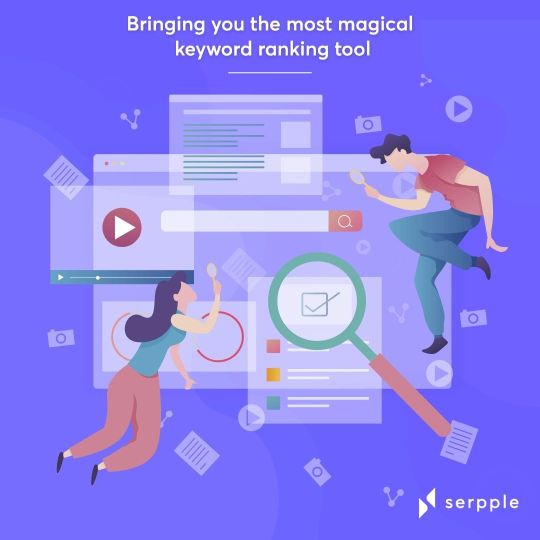
0 notes
Text
Website ranking checker tool
A perfect keyword ranking tool is a one which gives clear-cut raking information for the target keywords localized to desired locations.
Only With such an effective SERP checking tool, you can view the positional changes of the keywords correctly without any glitches.
Start tracking your keyword with our reliable website rank checker tool, SERRPLE.
Serpple is a precise website ranking checker tool that helps to monitor your location-specific and accurate keyword ranking data for any keyword.
Also, you can get customized ranking reports and frequent updates on keyword position changes with the help of our ideal website ranking checker.
Therefore, make use of Serpple and get google keyword ranking data for your targeted keywords.
0 notes